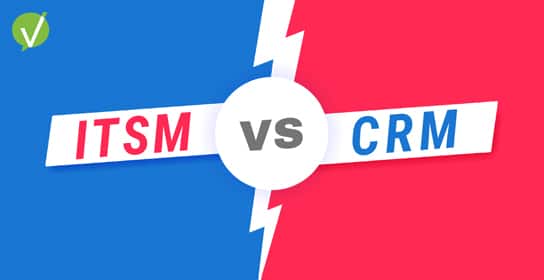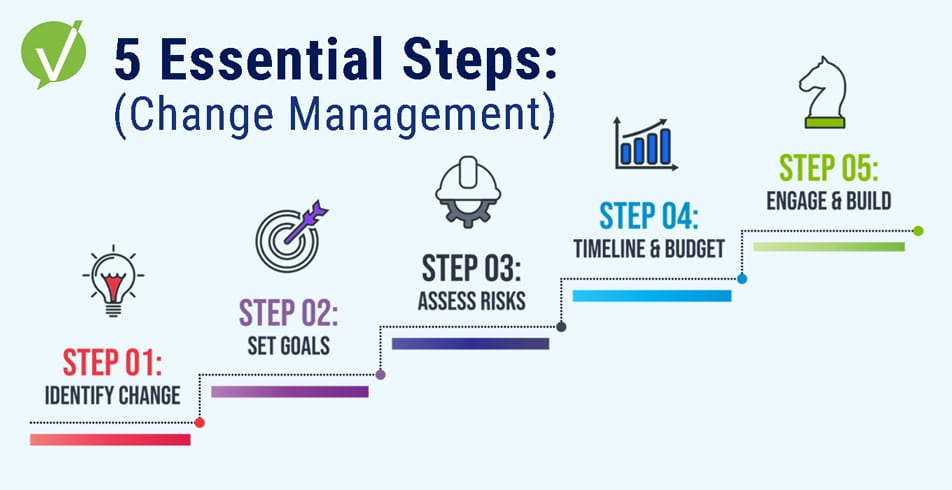ITSM vs CRM: Understanding the Key Differences

Introduction
Key Takeaways:
- ITSM and CRM are two important software solutions for businesses.
- ITSM focuses on managing and delivering IT services, while CRM helps manage customer interactions.
- Understanding the key differences between ITSM and CRM can help you make an informed decision about which one best fits your business needs.
- Assessing your business needs and evaluating the level of customization required are important considerations when choosing between these solutions.
- Integrating ITSM and CRM can create a seamless flow of information and processes.
ITSM Professionals: ITSM vs CRM
When it comes to managing your business needs, choosing the right software solution is crucial. ITSM and CRM are two important tools that can help streamline your day-to-day activities, but they have distinct differences.
ITSM, or IT Service Management, focuses on managing and delivering IT services to meet the needs of an organization. On the other hand, CRM, or Customer Relationship Management, helps businesses manage interactions with their customers.
By understanding the key differences between these two solutions, you can make an informed decision about which one best fits your specific business needs.
What is ITSM?
If you’re not familiar with ITSM, it stands for Information Technology Service Management, and it’s all about managing and delivering IT services to meet the needs of your organization. ITSM professionals use a variety of tools and systems to streamline service delivery, asset management, incident management, and more.
One popular framework used in ITSM is ITIL, which stands for Information Technology Infrastructure Library. ITIL is a set of best practices for ITSM, covering everything from incident management to change management to service level management.
ITSM professionals often use specialized tools and systems to improve their workflows and processes. These can include:
- ITSM software: Software solutions designed specifically for ITSM, such as ServiceNow, Jira Service Management, and SolarWinds Service Desk.
- ITSM integrations: Integrations with other IT systems and tools to create a seamless flow of information and processes.
- ITSM systems: Comprehensive systems that include modules for service desk, change management, and other ITSM functions.
ITSM professionals are responsible for keeping IT services running smoothly for internal and external users, ensuring compliance with performance standards and agreements, and managing assets and resources to support business objectives.
What is CRM?
Customer Relationship Management, or CRM, is a system that helps businesses manage interactions with their customers. A CRM system can track customer contracts, nurture leads, manage sales and marketing campaigns, and improve customer experience. With a CRM tool like Salesforce, Microsoft Dynamics CRM, or other CRM solutions, you can
- Store customer information and interactions in one place
- Track leads and sales pipelines, and monitor the performance of your marketing campaigns
- Customize dashboards to display relevant data insights
- Create service tickets and manage customer support issues
One of the most popular CRM systems is Salesforce CRM, which caters to businesses of all sizes and offers a range of features to handle various customer relationship management needs. Microsoft Dynamics CRM is another popular CRM solution, with tools to manage sales, marketing, and customer service interactions.
When it comes to CRM vs ITSM, it’s important to understand the key differences between the two systems and evaluate which one best meets your specific business needs.
Key Differences in Purpose: CRM vs ITSM
When it comes to ITSM vs CRM, one of the most significant differences lies in their purpose. ITSM is primarily concerned with managing internal and external service management, streamlining day-to-day activities and interactions. This includes incident management, asset management, and more, all aimed at ensuring efficiency in service delivery.
In contrast, CRM is laser-focused on managing customer relationships, from acquiring new customers to maximizing profitability and customer retention. It does this by providing tools for nurturing leads, managing sales and marketing campaigns, tracking customer contracts, and improving customer experience.
ITSM |
Streamline internal and external service management | Efficient incident management | Optimized asset management |
CRM |
Manage customer relationships | Acquire new customers | Maximize profitability and customer retention |
Understanding these differences is crucial because it determines which solution best fits your business needs. If you’re looking to streamline day-to-day activities and interactions, ITSM is the way to go. On the other hand, if you want to focus on customer acquisition, profitability, and retention, then CRM is the ideal solution.
It’s important to note that while both ITSM and CRM have service management at their core, their approach to achieving this goal is vastly different. By evaluating the differences in purpose, you can choose the solution that aligns with your business needs and delivers the best results.
Differences in Functionality: Learn from CRM
ITSM infrastructures offer a wide range of functionality options for ITSM professionals. These include ITSM integrations with various IT systems and software to streamline management of computers, servers, and databases. ITSM software also provides advanced reporting features, customizable dashboards, and other tools to optimize incident management and other day-to-day IT activities.
On the other hand, CRM’s laser-focused approach to solutions prioritizes customer-centric functionality. This includes providing a dashboard with comprehensive lead tracking, sales forecasting, customer engagement, and social media integration. Other functionalities include marketing automation, contact management, and ticketing systems to manage customer inquiries and support requests.
While ITSM and CRM have different priorities, they can complement each other if integrated correctly, for instance, by using ITSM software to manage IT incidents to better support CRM operations.
Good IT service management helps you get better feedback from customers and better insight into how you are performing.
– Chris Wright
Differences in Processes: Business Needs
When it comes to the differences between ITSM and CRM, one of the most significant contrasts is in their approach to service management. ITSM follows the framework set out by ITIL (Information Technology Infrastructure Library) and includes processes like service level management, incident management, and compliance with performance standards agreed upon in service level agreements (SLAs) and operational level agreements (OLAs). ITIL service level management is the practice of ensuring that IT services meet customers’ agreed-upon needs and expectations.
On the other hand, CRM is focused on streamlining sales, marketing, and customer service processes. While it may have some compliance components, it is not as rigorous as what ITSM demands. Therefore, it is more suitable for managing customer relationships and improving customer experiences, and not internal operations like ITSM.
For example, compliance with performance standards is essential in ITSM, as it ensures both the IT team and the organization keep to their end of the agreement. This agreement involves performance metrics such as availability, response time, and customer satisfaction. CRM solutions do not have such agreements as they focus more on customer acquisition, retention, and satisfaction rather than internal processes.
Below is a table highlighting the main differences between ITSM and CRM processes:
ITSM |
CRM |
|---|---|
| It follows the ITIL framework | It has no specific framework |
| Compliance with performance standards such as SLAs and OLAs is crucial | There is no emphasis on compliance |
| Primarily focused on internal IT operations | Primarily focused on customer relationship management |
Understanding the differences in processes between ITSM and CRM is crucial when evaluating which solution best meets your business needs. ITSM is ideal for organizations that require compliance with strict performance standards, while CRM is perfect for companies that need to prioritize customer-centric processes and improve customer experiences.
Differences in Deployment
When it comes to choosing between ITSM and CRM, deployment options are an important consideration. While both software solutions can be deployed on-premises, cloud deployment has become increasingly popular for businesses of all sizes. It offers a range of benefits, including easier access to data and tools, lower upfront costs, and improved scalability.
Cloud-based ITSM software, such as ServiceNow, allows you to manage your ITSM tools and systems from anywhere, anytime. Similarly, cloud-based CRM systems like Salesforce CRM offer businesses an opportunity to streamline the customer relationship management process without having to invest in expensive infrastructure.
When deciding between ITSM and CRM, consider the deployment options available to you and how they align with your business needs. Cloud deployment can be an excellent choice for businesses looking to reduce costs, improve scalability, and increase accessibility.
Examples of Use Cases
If you’re wondering where ITSM and CRM are commonly used, here are some examples:
- Call centers and help desks: ITSM is often used to efficiently handle customer inquiries and internal IT issues, while CRM finds use in managing customer interactions and improving customer experience.
- Internal users: ITSM is used by internal IT teams to manage the organization’s IT infrastructure and assets, while CRM is used by sales and marketing teams to manage customer interactions and track sales progress.
- Project management: Both ITSM and CRM can be used in project management, with ITSM streamlining project delivery and CRM supporting customer relationship management throughout the project lifecycle.
- Information technology: ITSM is specifically designed to manage IT services, while CRM can be used to manage customer interactions with information technology products and services.
- Digital commerce: CRM is commonly used in digital commerce to manage customer relationships, track sales progress, and improve customer experience, while ITSM can be used to streamline service delivery and asset management related to the organization’s digital commerce activities.
Integration Potential
When it comes to choosing between CRM and ITSM, it is essential to consider the potential for integration between the two solutions. While ITSM systems focus on service management, CRM tools prioritize customer relationship management, and the two solutions may seem different. However, they can be complementary and equate to a more streamlined, efficient business process.
Integrating ITSM and CRM solutions can help you learn from CRM’s laser-focused approach to solutions while streamlining day-to-day activities and interactions with ITSM infrastructures. By doing so, businesses can ensure that internal and external interactions are well managed, service levels are agreed upon, and compliance with performance standards is maintained.
To help illustrate this point, please see the following table:
ITSM Systems |
CRM Tool |
|---|---|
| Streamlines internal and external service management | Focuses on efficient customer relationship management |
| Enables compliance with performance standards agreed upon in service level agreements (SLAs) and operational level agreements (OLAs) |
Offers customizable dashboards and advanced reporting options |
| Integrates with various IT systems and software for seamless management of computers, servers, and databases |
Helps manage interactions with customers, nurturing leads, managing sales and marketing campaigns, and tracking customer contracts |
As you can see, the potential for integration between ITSM systems and CRM tools is substantial and can provide businesses with a considerable competitive advantage. By combining the strengths of both solutions, businesses can deliver exceptional customer experiences while streamlining their day-to-day activities and interactions.
Key Considerations for Choosing ITSM or CRM
When it comes to choosing between ITSM and CRM, there are several key considerations to keep in mind to ensure that you select the right solution for your business needs. Here are some factors to consider:
- Assess Your Business Needs: Before making a decision, it’s crucial to assess your business needs and determine which solution is the best fit. Consider the size of your organization, your specific industry, and your IT and customer relationship management requirements.
- Consider Best Practices: Both ITSM and CRM have industry best practices that should be taken into account. It’s essential to evaluate how each solution aligns with these best practices and can help your business achieve its goals.
- Evaluate Level of Customization and Configuration: Determine how much customization and configuration each solution requires. It’s important to choose a solution that can be tailored to meet your unique business needs and processes.
- Assess the Lifecycle of Your Customer Experience: Consider how each solution can support the entire lifecycle of your customer experience, from lead nurturing to customer retention and beyond.
- Nurture and Foster Customer Relationships: Evaluate how each solution can help you nurture and foster customer relationships. Customer experience is paramount, and it’s crucial to choose a solution that can support your efforts to provide the best service possible to your customers.
By considering these key factors, you can make an informed decision about whether ITSM or CRM is the right solution for your business needs.
Choosing the Right Solution for Your Business: ITSM Tools
When it comes to streamlining daily activities, managing customer contracts, and enhancing the delivery of your products and services, choosing between ITSM and CRM can be challenging. To help you make an informed decision, here are some key factors to consider:
- Streamline daily activities: Which solution can better streamline your day-to-day activities, reduce redundancies, and improve operational efficiency?
- Manage customer contracts: Which solution can better help you manage your customer contracts, track renewals, and identify upsell opportunities?
- Enhance products and services: Which solution can better help you enhance the delivery of your products and services, and improve your customers’ overall experience?
- Attract potential customers: Which solution is better equipped to attract and retain potential customers, nurture leads, and foster long-term relationships?
Assessing these factors will help you determine which solution is best for your business needs. It’s also important to consider the level of customization and configuration required for each solution, as well as the ability to integrate with other tools and systems.
Ultimately, by carefully evaluating your business needs and assessing how each solution can streamline your processes, manage customer relationships, and drive profitability, you can make an informed decision that aligns with your unique requirements.
ITSM Professionals: Choosing Between ITSM and CRM
Choosing between ITSM and CRM ultimately comes down to your specific business needs. Understanding the differences between the two solutions can help you streamline your daily activities and optimize your customer relationship management and IT service management.
When evaluating your options, consider the level of customization and configuration required for each solution, as well as how well each can support the lifecycle of your customer experience and nurture and foster customer relationships.
By carefully assessing your business needs, you can choose the solution that best meets your unique requirements. Whether you opt for ITSM or CRM, you can streamline your processes and enhance the delivery of your products and services.
Thank you for reading this article on ITSM vs. CRM, and we hope it has provided you with valuable insights into how these solutions can benefit your business. Remember, the key to success is understanding the unique benefits and features of each solution and how they can support your business goals. With the right approach, you can choose the solution that will streamline your business processes and maximize your profitability. To discover how Vivantio can support your business goals, reach out to our team today or sign up for a free demo.













